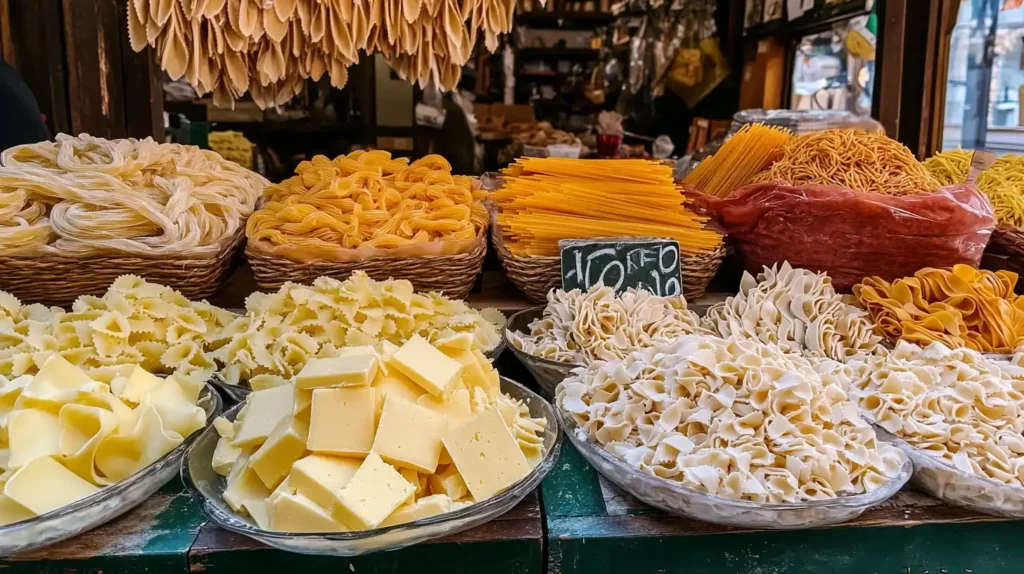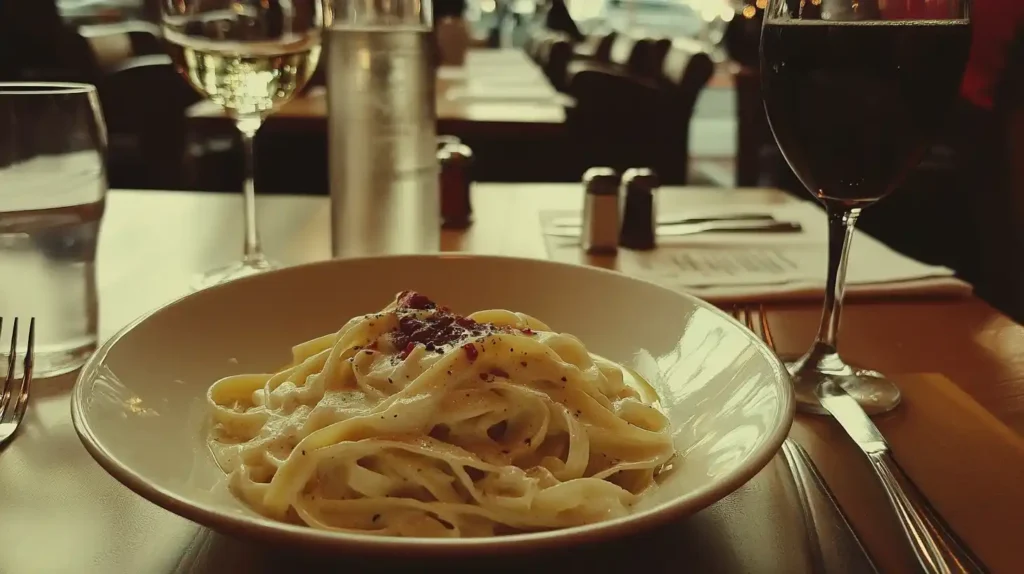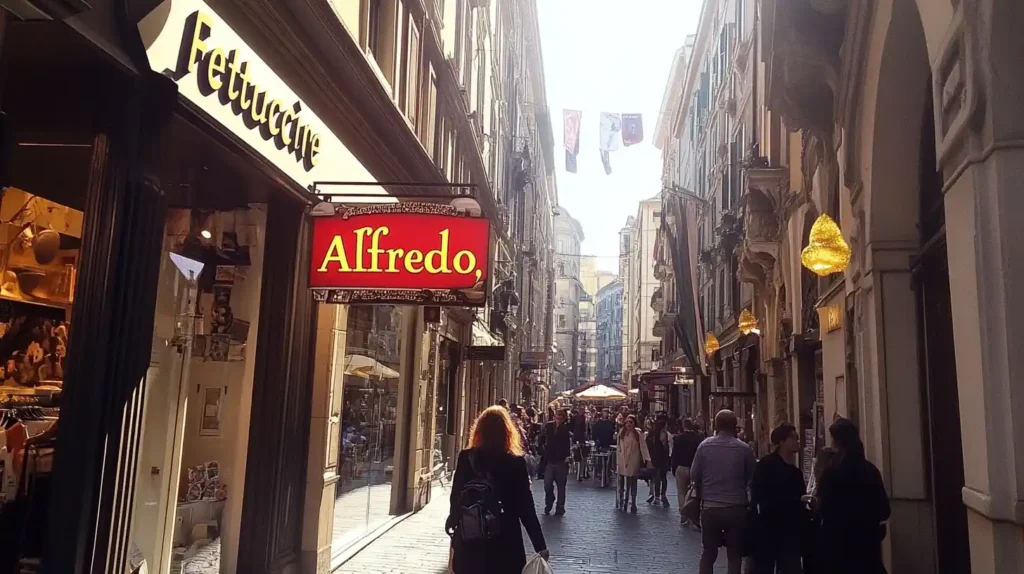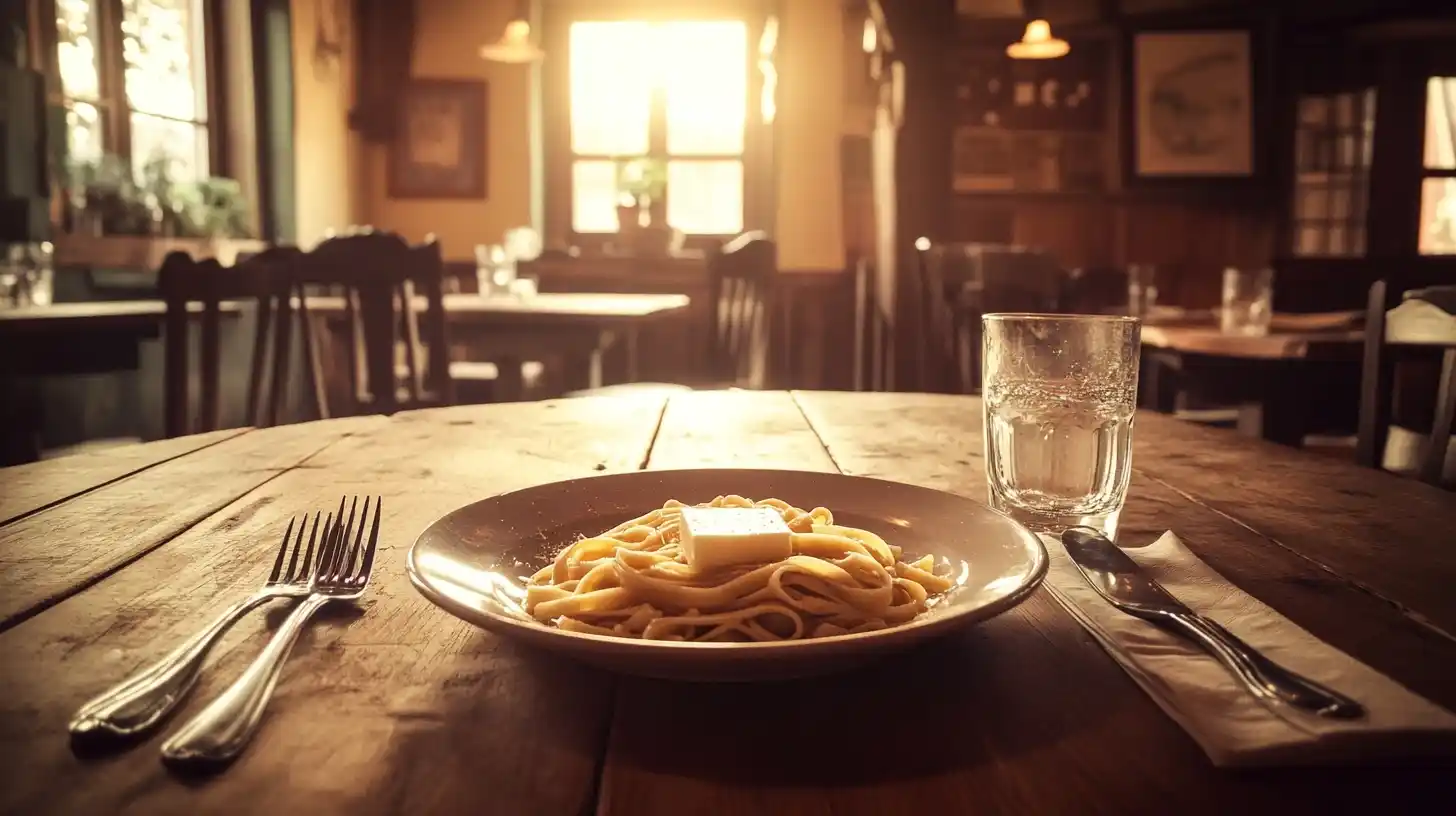Fettuccine Alfredo is a dish loved by many, especially in the United States. But why is Fettuccine Alfredo not popular in Italy? Despite being considered Italian by many, this creamy pasta dish is rarely found on Italian menus. Let’s uncover the story behind its limited appeal in Italy and how it became a favorite abroad.
How Did Fettuccine Alfredo Start?
The journey of Fettuccine Alfredo began in Rome, where Alfredo di Lelio created the dish in the early 1900s. He used simple ingredients: butter, Parmesan cheese, and fresh fettuccine. While Italians enjoyed this light, flavorful meal, it never became a national staple. Surprisingly, Fettuccine Alfredo gained international fame thanks to Hollywood stars who popularized it in America.
But why is Fettuccine Alfredo not popular in Italy today? The answer lies in Italy’s strong culinary traditions. Italians favor lighter sauces and fresh, seasonal ingredients, making the rich, creamy version of Alfredo less appealing.
However, the dish’s fame spread far beyond Italy when Hollywood stars Mary Pickford and Douglas Fairbanks visited Alfredo’s restaurant. They brought their love for the dish back to America, where it gained rapid popularity. For a broader understanding of Fettuccine Alfredo’s origins, you might enjoy reading about the ultimate guide to fettuccini.

Over time, Alfredo served this dish to guests at his restaurant. Italians appreciated its simplicity, which matched their culinary traditions. It became a local favorite for a while.
However, the dish gained worldwide fame thanks to an unexpected event. Hollywood stars Mary Pickford and Douglas Fairbanks visited Alfredo’s restaurant while on their honeymoon. They loved the dish so much that they brought the idea back to the U.S. This was the start of its journey into international fame.
Why Is It So Popular in the U.S.?
When Fettuccine Alfredo arrived in the United States, it underwent a big transformation. The original recipe, with just butter and Parmesan cheese, was changed to include heavy cream. This made the dish richer and more indulgent, which appealed to American tastes. Americans loved the creamy sauce and the comforting texture it added to the pasta.
The rise of Italian-American cuisine also helped Fettuccine Alfredo gain popularity. Italian immigrants brought their food traditions to America but adapted recipes to suit local preferences. Dishes like spaghetti and meatballs and chicken parmigiana emerged during this time. Similarly, the creamy Alfredo sauce became a beloved part of Italian-American cooking.
Moreover, the dish was easy to prepare and could be made with ingredients commonly found in American kitchens. This convenience made it a favorite among home cooks and restaurant owners alike. Over time, it became a staple in American households.

Why Don’t Italians Love Alfredo Sauce?
Italian cuisine emphasizes balance, simplicity, and authenticity. Heavy cream, a key component in American Alfredo sauce, is rarely used in Italian pasta dishes. Instead, traditional Italian recipes like Pasta al burro and Cacio e Pepe focus on minimal, fresh ingredients.
Tourists often expect to see Fettuccine Alfredo in Italy, but they are often disappointed. Restaurants catering to visitors may include it on menus, but for Italians, this dish feels too heavy. This cultural difference helps explain why Fettuccine Alfredo is not popular in Italy.
In traditional Italian cooking, cream is rarely used in pasta sauces. Instead, Italians use olive oil, butter, or cheese to add richness. The original Fettuccine Alfredo—made with just butter and Parmesan—aligned with this philosophy. However, the creamy version popular in the U.S. feels too heavy and overpowering to most Italians.

Popular Italian Alternatives
Instead of Alfredo, Italians enjoy dishes that are simpler and lighter. Here are a few favorites:
- Pasta al burro: This dish uses only butter and Parmesan, similar to Alfredo’s original recipe but without cream.
- Cacio e Pepe: Made with pecorino cheese and black pepper, this is a flavorful yet minimalistic dish.
- Fettuccine alla Romana: A traditional Roman pasta dish that uses lighter sauces with fresh ingredients.
These dishes reflect Italian culinary values: simplicity, balance, and quality. While Alfredo sauce is beloved in the U.S., it doesn’t match Italian preferences.
What Do Tourists Expect?
Many tourists visiting Italy expect to see Fettuccine Alfredo on menus everywhere. They assume it is a staple of Italian cuisine, much like pizza or pasta carbonara. However, this is far from the truth. Fettuccine Alfredo, especially the creamy version, is almost unheard of in Italy.
Why Tourists Look for Alfredo Sauce
Tourists often associate Italian food with what they have experienced in their home countries. Italian-American dishes like spaghetti and meatballs or chicken parmigiana are often mistaken for authentic Italian recipes. This creates unrealistic expectations. As a result, some restaurants in tourist-heavy areas add Fettuccine Alfredo to their menus, even though it is not a traditional dish.
Common Misconceptions About Italian Cuisine
- Heavy cream in pasta: Italians rarely use cream in their sauces. Instead, they rely on olive oil, butter, or cheese.
- Rich, heavy dishes: Authentic Italian food focuses on balance. Overly rich dishes are less common.
- Tourist-friendly menus: Many dishes found in tourist areas are adapted to suit foreign tastes.
These misconceptions highlight the gap between traditional Italian cooking and what people think it is. While tourism has spread Italian food globally, it has also led to a misunderstanding of its roots.
Why Tourists Look for Alfredo Sauce
Tourists often associate Italian food with what they have experienced in their home countries. Italian-American dishes like spaghetti and meatballs or chicken parmigiana are often mistaken for authentic Italian recipes. This creates unrealistic expectations. As a result, some restaurants in tourist-heavy areas add Fettuccine Alfredo to their menus, even though it is not a traditional dish.
Common Misconceptions About Italian Cuisine
- Heavy cream in pasta: Italians rarely use cream in their sauces. Instead, they rely on olive oil, butter, or cheese.
- Rich, heavy dishes: Authentic Italian food focuses on balance. Overly rich dishes are less common.
- Tourist-friendly menus: Many dishes found in tourist areas are adapted to suit foreign tastes.
These misconceptions highlight the gap between traditional Italian cooking and what people think it is. While tourism has spread Italian food globally, it has also led to a misunderstanding of its roots.
How Tourism Influences Italian Food
Tourism plays a significant role in shaping what people believe is authentic Italian food. Italy, as one of the most visited countries in the world, welcomes millions of tourists every year. Many of these visitors come with expectations shaped by their own experiences with Italian-American cuisine. As a result, Italian restaurants in tourist-heavy areas often adapt their menus to meet these expectations.
Tourist-Driven Menus
Some restaurants near popular landmarks or tourist hubs include dishes like Fettuccine Alfredo to cater to foreign visitors. These menus are designed to be familiar and comforting, even if they do not reflect traditional Italian food. Restaurants may also exaggerate the richness of dishes to appeal to tastes that lean toward bold, indulgent flavors.
However, Italians themselves rarely dine at these tourist-centric establishments. Local residents prefer small trattorias or family-run restaurants that serve authentic, regional recipes. These places prioritize fresh, seasonal ingredients and maintain traditional cooking methods.
The Gap Between Authenticity and Expectation
This tourist-driven adaptation has created a divide. Visitors leave Italy thinking dishes like Fettuccine Alfredo are traditional staples. Meanwhile, locals rarely consider these recipes part of their culinary heritage. This disconnect highlights the challenge of preserving authenticity in the face of global tourism.
How Tourists Can Embrace Authentic Italian Food
To truly experience Italian cuisine, visitors should:
- Explore local, off-the-beaten-path restaurants.
- Order regional specialties instead of familiar dishes.
- Ask for recommendations from locals, as they know the best hidden gems.
By doing so, tourists can gain a deeper appreciation for Italy’s diverse and authentic food culture.
Frequently Asked Questions About Fettuccine Alfredo
Here are some common questions about Fettuccine Alfredo and its relationship with Italian cuisine. These FAQs address common misconceptions and provide clarity.
Why Isn’t Fettuccine Alfredo Popular in Italy?
In Italy, food traditions focus on simplicity and fresh ingredients. The heavy, creamy Alfredo sauce does not match Italian preferences for lighter, well-balanced pasta dishes. While the original recipe with butter and Parmesan fits their culinary style, the American version with cream feels overly rich and indulgent.
What Do Italians Eat Instead of Alfredo?
Italians enjoy lighter pasta dishes that emphasize simplicity. Some popular alternatives include:
- Pasta al burro: Butter and Parmesan cheese pasta.
- Cacio e Pepe: A combination of pecorino cheese and black pepper.
- Fettuccine alla Romana: A dish with lighter sauces and fresh ingredients.
These dishes are flavorful yet minimalistic, staying true to Italian culinary values.
Is Alfredo Sauce Italian or American?
The original Fettuccine Alfredo recipe created by Alfredo di Lelio is Italian. However, the creamy Alfredo sauce popular in the U.S. is an American adaptation. The addition of heavy cream changed the dish significantly, making it more suited to American tastes.
Why Do Americans Love Fettuccine Alfredo?
Americans love Fettuccine Alfredo for its rich, creamy texture and indulgent flavor. It is a comforting dish that feels luxurious but is easy to prepare. The addition of cream and larger portions make it more aligned with American dining preferences.
Can You Find Fettuccine Alfredo in Italy?
In Italy, Fettuccine Alfredo is rare. You might find it in restaurants catering to tourists, especially in cities like Rome or Venice. However, Italians themselves rarely order or prepare it. Instead, they opt for other traditional pasta dishes.
Is There a Traditional Italian Dish Similar to Alfredo?
Yes, Italians make dishes like Pasta al burro (butter pasta) and Cacio e Pepe (cheese and pepper pasta). These dishes are similar to the original Alfredo recipe but do not include heavy cream.
By addressing these questions, we gain a clearer understanding of Fettuccine Alfredo’s cultural significance and why it has such different identities in Italy and the U.S.
The Modern View of Fettuccine Alfredo
Today, Fettuccine Alfredo has two very different identities. In the United States, it is a beloved comfort food, often featured on restaurant menus and cooked at home. In Italy, however, it remains a rarity, mostly found in tourist-focused establishments. Let’s explore how the dish is viewed in both contexts today.
In the United States: A Staple of Italian-American Cuisine
In America, Fettuccine Alfredo has become synonymous with indulgence. The creamy, rich sauce appeals to those who love hearty meals. Its simple preparation also makes it a favorite for home cooks. The dish’s widespread appeal is evident in:
- Restaurant Menus: Italian-American eateries often feature Fettuccine Alfredo as a centerpiece dish.
- Packaged Foods: Grocery stores sell pre-made Alfredo sauces, making it even easier for people to enjoy at home.
- Variations: Many restaurants offer versions with chicken, shrimp, or vegetables, adapting the dish further to suit diverse tastes.
For Americans, Fettuccine Alfredo is more than just a meal it’s a comfort food that satisfies cravings for creamy, rich flavors.
In Italy: A Dish for Tourists
In Italy, Fettuccine Alfredo is not part of the traditional culinary landscape. Most Italians are unfamiliar with the creamy version that Americans love. However, you might find it in tourist-heavy areas, such as Rome or Venice. Restaurants catering to international visitors may include Alfredo on their menus to meet expectations.
Even in these settings, the dish is often prepared differently. Chefs might stick closer to the original recipe, using butter and Parmesan rather than cream. This simplified version aligns more with Italian cooking principles.
Why Italians Stick to Tradition
Italian chefs prioritize preserving their culinary heritage. They focus on dishes that have deep roots in their regions, using fresh, local ingredients. For them, the creamy Alfredo sauce feels too far removed from the traditions they value. Instead, they celebrate pasta dishes like:
- Spaghetti alla Carbonara
- Pasta alla Gricia
- Fettuccine alla Romana
These recipes stay true to the simplicity and balance that define Italian cuisine.
A Modern View on Fettuccine Alfredo in Italy
Today, Fettuccine Alfredo in Italy is mostly a tourist attraction. It appears on menus in Rome or Venice, but rarely elsewhere. The dish has become a symbol of Italian-American cuisine rather than an authentic Italian specialty. This contrast highlights why Fettuccine Alfredo is not popular in Italy despite its global fame.
The Global Influence of Fettuccine Alfredo
The journey of Fettuccine Alfredo highlights the broader evolution of Italian cuisine abroad. As Italian food spread worldwide, it adapted to fit the tastes of new audiences. This process created dishes that feel Italian but are not truly part of Italy’s culinary identity. Alfredo’s story serves as a reminder of how food evolves when it crosses cultural boundaries.
Embracing Authenticity
For those visiting Italy, experiencing authentic Italian dishes can provide a new appreciation for the country’s food culture. While it’s tempting to seek out familiar favorites like Fettuccine Alfredo, exploring regional specialties offers a deeper understanding of Italy’s culinary traditions.
Conclusion: The Journey of Fettuccine Alfredo
The story of Fettuccine Alfredo in Italy reveals the stark differences between Italian and Italian-American cuisines. While this dish thrives in the U.S., it has little place in Italy’s rich culinary heritage. By exploring these contrasts, we can better understand why Fettuccine Alfredo is not popular in Italy and appreciate the authentic traditions of Italian cooking.
This divide highlights the differences between Italian and Italian-American cooking. Italy’s culinary traditions focus on simplicity, balance, and fresh ingredients. The heavier, cream-based Alfredo sauce doesn’t align with these principles. Instead, Italians favor lighter pasta dishes like Cacio e Pepe or Pasta al burro, which reflect their culinary values.
For travelers and food lovers, this story is a reminder to explore the authentic roots of a dish. By seeking out local specialties and understanding the traditions behind them, we can appreciate the diversity and depth of Italian cuisine.
In the end, Fettuccine Alfredo is a dish that represents more than just food—it tells a story of adaptation, cultural exchange, and how tastes change over time. Whether enjoyed in its American form or its Italian origins, it serves as a delicious connection between two worlds.

